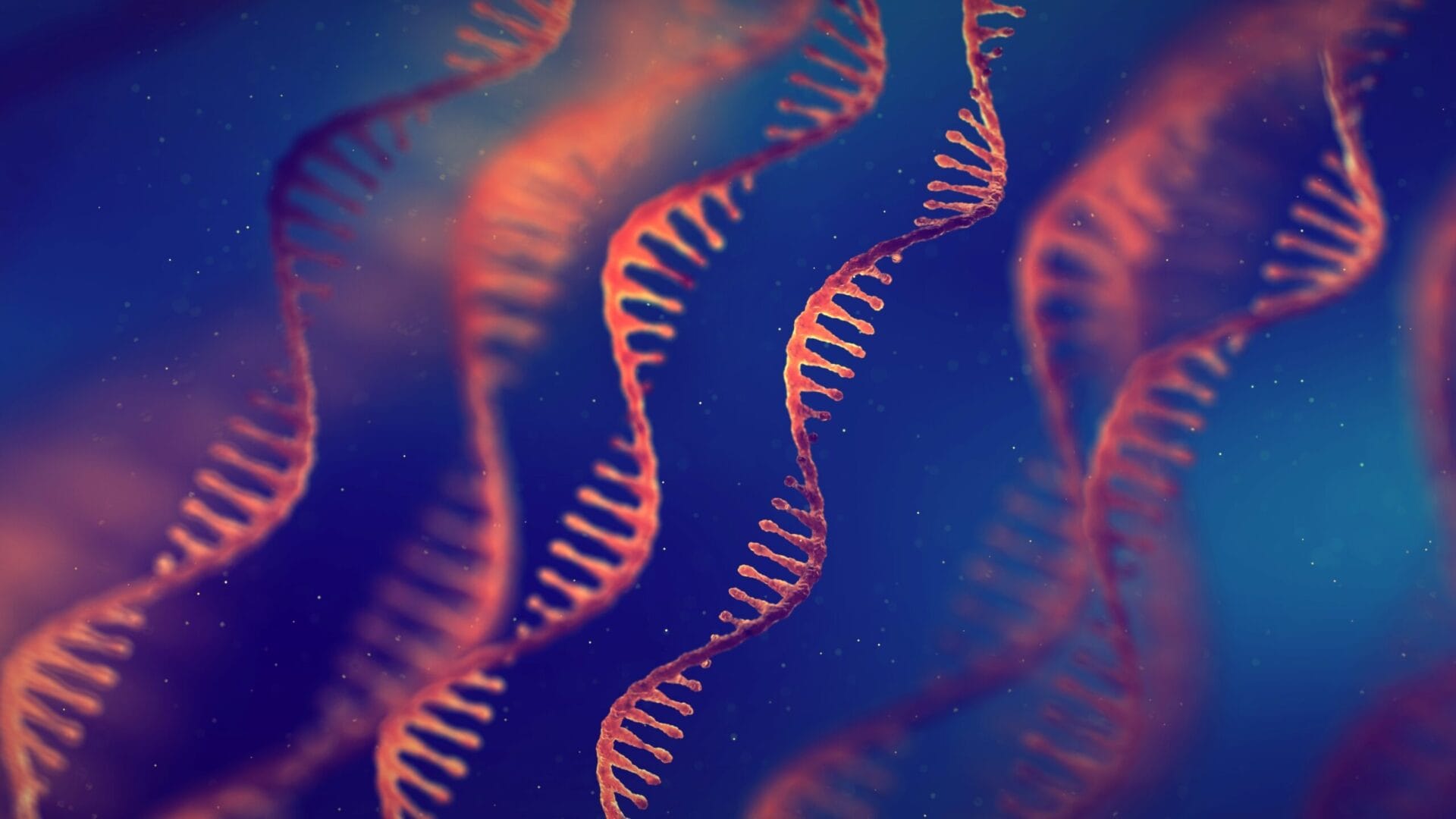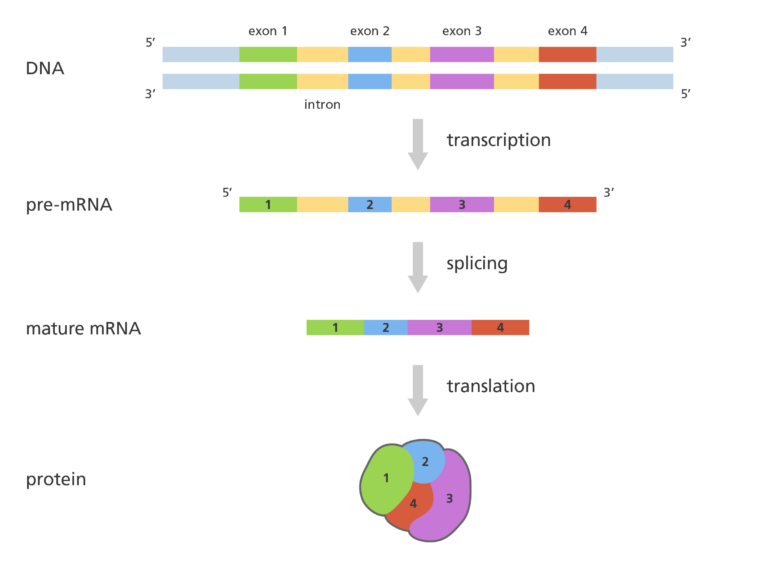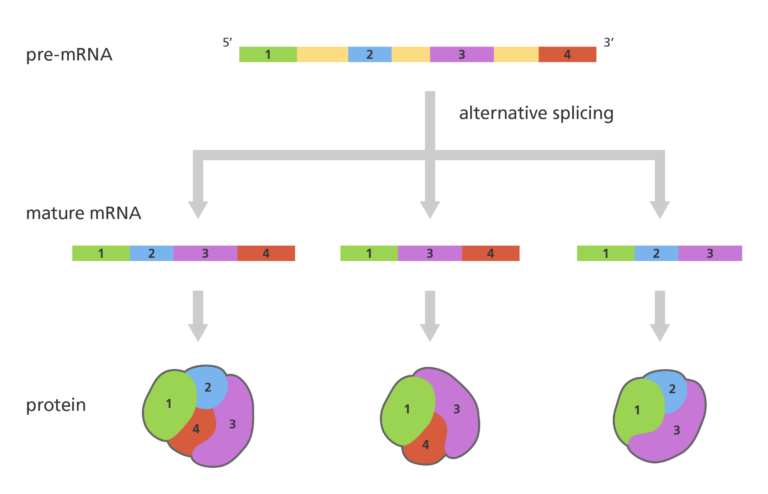What is RNA splicing?
Image credit: Shutterstock

Splicing occurs during protein synthesis, and involves cutting out and rearranging sections of mRNA.
- Before mRNA is used as instructions to make a protein, it can be cut into smaller sections and re-arranged in a process called splicing.
- Splicing occurs at the end of the transcription process, as part of pre-mRNA processing.
- The process of splicing can create different variations of the same mRNA by keeping different combinations of exons, this is called alternative splicing.
What happens during RNA splicing?
- During splicing, coding-regions of mRNA (exons) are kept and non-coding regions of mRNA (introns) are cut out and removed.
- mRNA Splicing is an important step in the transcription process, as without removing the introns the correct protein cannot be formed.
- mRNA Splicing is also part of the regulation of gene expression and protein levels in the cell.

What is alternative splicing?
- The process of splicing can create different variations of the same mRNA by keeping different combinations of exons, this is called alternative splicing.
- Alternative splicing means that a single gene can code for more than one type of mRNA molecule, and therefore more than one protein. This is thought to be a ‘space saving’ mechanism, as multiple proteins can be created by a single stretch of DNA.

Article written by Olivia Edwards, PhD Student at the Wellcome Sanger Institute